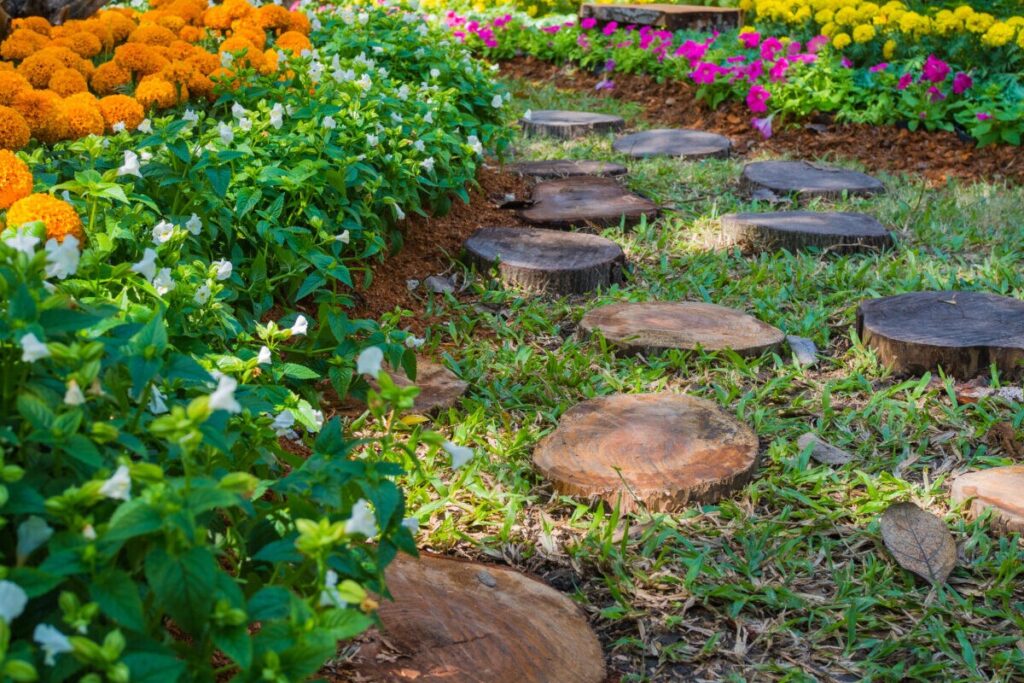10. Tree Slice Pathway

If you find yourself with extra tree stumps or trees that fell during a storm, why not repurpose them into a pathway? This approach leaves nothing to waste, as the parts that can’t be used can still find purpose in a campfire. Tree stump pathways have a charming rustic quality, and that rustic charm is often what makes them appealing.
Emphasizing the Importance of Non-slip Surfaces for Garden Paths
The primary objective of establishing a more permanent garden path is to eliminate slipperiness, especially in comparison to mud. As you might be aware from personal experiences in bathrooms or spas, not all tiles provide the same level of traction. Some are more slippery than others, especially when walked upon with bare or flip-flopped feet, and this principle extends to various paving materials.
It is advisable to conduct tests on a few samples before your path becomes wet to ensure optimal slip resistance. Additionally, when selecting materials, consider whether wheelchair access needs to be accommodated. Prioritizing anti-slip surfaces becomes even more crucial if your household includes elderly individuals and children.
Now that you have multiple options at your disposal, how would you envision your ideal garden path?
